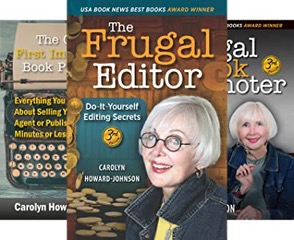Contributed by Karen Cioffi, Children's Writer
As with anything you attempt to do, it’s essential to know what you’re doing.
My father was a contractor—he built homes.
How structurally sound do you think those homes would have been if he didn’t know what he was doing or didn’t know how to read blueprints?
Or what about a musician who didn’t learn how to play an instrument. Or one who knew the basics but never practiced them. Would you attend a concert that musician was giving?
Well, the same thing applies to writing for children.
It’s true that a self-published author can publish a poorly written book; no one will stop him. But do you think that’s fair to the reader and those authors who produce quality books?
The answer is NO on both accounts.
A common problem I see with new children’s authors is that they’re not familiar with the different genres.
I’ll see 2,000-word picture book drafts or 9,000-word middle-grade drafts.
I’ll also see things like an intended middle-grade draft with inappropriate content for the age group.
This also applies to the words you use in your story. Everything must be age-appropriate when writing for children.
And there must be a main character (protagonist).
A story I recently reviewed had no main character. It didn’t have a story arc, either.
This is common for some new authors. They have a message they want to convey but don’t realize it needs to be within the boundaries of a good fiction story.
Another biggie I notice is middle-grade stories with multiple points of view (POV), even going so far as to change POVs within a chapter.
I realize that many people think writing for children is simple.
How hard can it be, right?
Well, it’s actually a tricky genre to write in.
When writing for children, you must adhere to the industry’s standard guidelines. In other words, you need to know what you’re doing … you need to play by the rules.
Some elements that pertain to playing by the rules are:
1. Word count
2. Sentence length
3. Chapter length
4. Story length
5. Age-appropriate content
6. Age-appropriate words
7. Point of view
8. Protagonist
9. Character arc: The protagonist must overcome the problem and grow in some way as a result of the journey
10. Story arc
While there are other factors involved, these are ten of the most important.
So, before you jump into a children’s story, read a lot of books in the genre you want to write. Be sure they’re well-written, though. A good way to do this is to read recently traditionally published books by top publishers, such as Simon & Schuster, Houghton Mifflin Harcourt, and Chronicle Books.
There are good self-published books out there, but it’s sometimes a guessing game as to which are well-written and which are poorly written. You wouldn’t want to learn or model poorly written books.
Traditionally published books will be up to the current publishing guidelines and well-edited.
You should also take a few online children’s writing courses, read books on writing for children, and possibly get a children’s writing coach to help you overcome the hurdles of writing a publishable book.
This article was first published at:
Writing for Children – Know What You're Doing
ABOUT THE AUTHOR
Karen Cioffi is an award-winning children’s author, working ghostwriter, rewriter, editor, and writing coach. If you need help with your story, visit Writing for Children with Karen Cioffi.
OTHER TOOLS FOR CHILDREN'S AUTHORS:
HOW TO WRITE A CHILDREN'S FICTION BOOK
A DIY book to help you write your own children’s book.
PICTURE BOOK, CHAPTER BOOK, MIDDLE GRADE COACHING
Four to twelve-week coaching programs.
FICTION WRITING FOR CHILDREN eCOURSE
4-Week / 8 Sections Guided Self-Study Mentoring Program



































